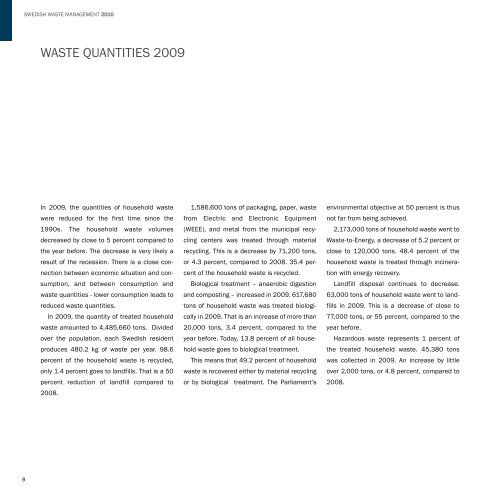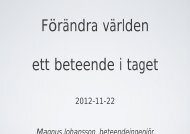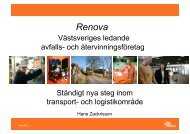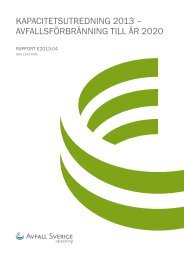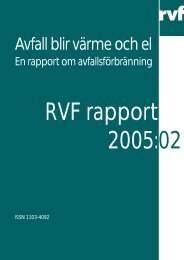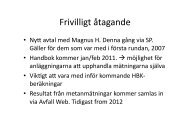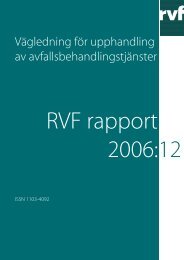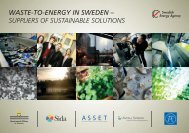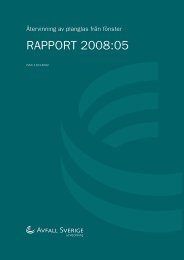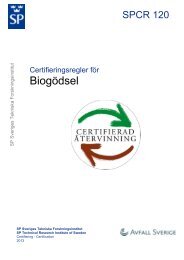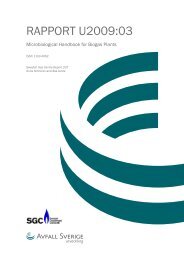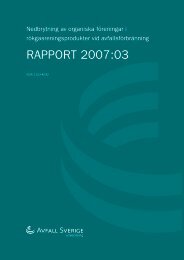SWEDISH WASTE MANAGEMENT |2010 - Avfall Sverige
SWEDISH WASTE MANAGEMENT |2010 - Avfall Sverige
SWEDISH WASTE MANAGEMENT |2010 - Avfall Sverige
Create successful ePaper yourself
Turn your PDF publications into a flip-book with our unique Google optimized e-Paper software.
<strong>SWEDISH</strong> <strong>WASTE</strong> <strong>MANAGEMENT</strong> 2010<strong>WASTE</strong> QUANTITIES 2009In 2009, the quantities of household wastewere reduced for the first time since the1990s. The household waste volumesdecreased by close to 5 percent compared tothe year before. The decrease is very likely aresult of the recession. There is a close connectionbetween economic situation and consumption,and between consumption andwaste quantities - lower consumption leads toreduced waste quantities.In 2009, the quantity of treated householdwaste amounted to 4,485,660 tons. Dividedover the population, each Swedish residentproduces 480.2 kg of waste per year. 98.6percent of the household waste is recycled,only 1.4 percent goes to landfills. That is a 50percent reduction of landfill compared to2008.1,586,600 tons of packaging, paper, wastefrom Electric and Electronic Equipment(WEEE), and metal from the municipal recyclingcenters was treated through materialrecycling. This is a decrease by 71,200 tons,or 4.3 percent, compared to 2008. 35.4 percentof the household waste is recycled.Biological treatment – anaerobic digestionand composting – increased in 2009. 617,680tons of household waste was treated biologicallyin 2009. That is an increase of more than20,000 tons, 3.4 percent, compared to theyear before. Today, 13.8 percent of all householdwaste goes to biological treatment.This means that 49.2 percent of householdwaste is recovered either by material recyclingor by biological treatment. The Parliament’senvironmental objective at 50 percent is thusnot far from being achieved.2,173,000 tons of household waste went toWaste-to-Energy, a decrease of 5.2 percent orclose to 120,000 tons. 48.4 percent of thehousehold waste is treated through incinerationwith energy recovery.Landfill disposal continues to decrease.63,000 tons of household waste went to landfillsin 2009. This is a decrease of close to77,000 tons, or 55 percent, compared to theyear before.Hazardous waste represents 1 percent ofthe treated household waste. 45,380 tonswas collected in 2009. An increase by littleover 2,000 tons, or 4.8 percent, compared to2008.8


